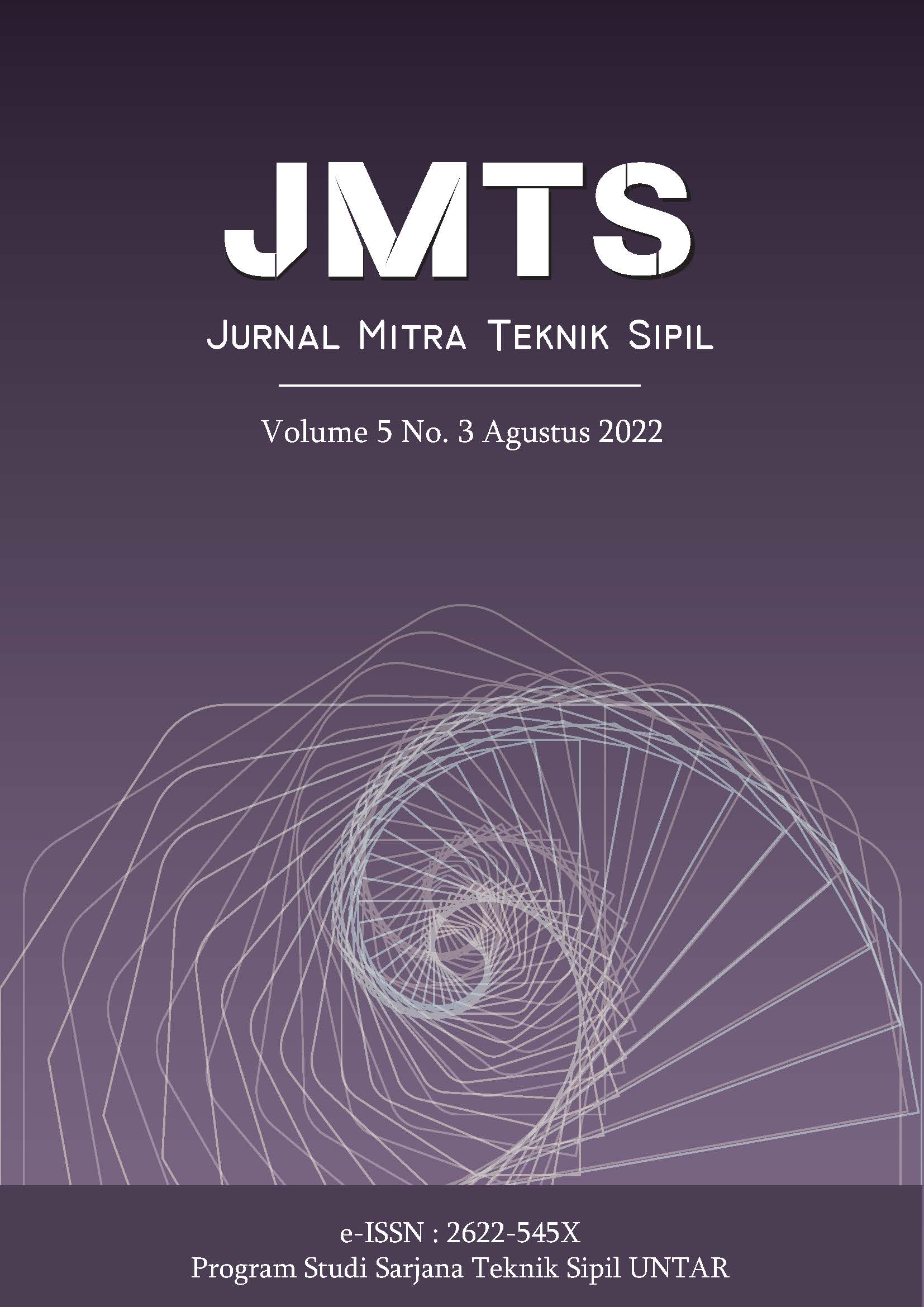PERANAN PENGEMUDI DALAM KECELAKAAN LALU LINTAS JALAN: LITERATURE REVIEW
Main Article Content
Abstract
One of problem in road transport is accident and based on data the main cause of accident is human or driver. The purpose of this study is to identify the role of human (driver) in accident process. This study will be analyzed the role of driver in road accident based on literature review result. The results show that a driver has major role, first, he must have and knows his capability (state awareness), secondly, he understands the task demand (risk awareness), and thirdly, he is able to decrease the task demand if his capability is under the task demand (calibration). The driver's capability is influenced by the competence and human factor ie. physical and non-physical conditions during the driving. Task demands are a combination of environment conditions such as road conditions, vehicle, other road users and surrounding nature. Nevertheless, the driver also contributes to the increasing or the descreasing the task demand itself, namely his driving behaviour and speed during driving. All the above shows that the driver has a major role in the process of an accident.
Abstrak
Salah satu masalah utama transportasi jalan adalah kecelakaan dan berdasarkan data penyebab utamanya manusia atau pengemudi. Penelitian ini bertujuan untuk mengidentifikasi peranan manusia (pengemudi) dalam proses terjadinya kecelakaan. Penelitian ini akan menganalisis peranan pengemudi dalam kecelakaan jalan berdasarkan hasil dari kajian pustaka. Dari hasil pembahasan diperoleh bahwa pengemudi memiliki peranan yang besar dalam proses terjadinya kecelakaan. Pengemudi memiliki tanggung jawab, pertama, dia harus memiliki dan mengetahui kemampuannya dalam berkendara (state awareness), kedua, dia harus mengetahui risiko (tuntutan tugas) yang dihadapi (risk awareness) dan ketiga, ia harus dapat mengurangi tuntutan tugas jika kemampuannya berada di bawah tuntutan tugas (calibration). Kemampuan mengemudi dipengaruhi oleh kompetensi dan faktor manusia (kondisi fisik dan non fisik) pengemudi selama berkendara. Sedangkan tuntutan tugas merupakan kombinasi dari kondisi lingkungan seperti kondisi jalan, kendaraan, pengguna jalan lain dan kondisi alam. Namun, pengemudi juga berkontribusi terhadap peningkatan atau penurunan tuntutan tugas, yaitu perilaku mengemudi dan kecepatannya selama mengemudi. Karena tanggungjawabnya itu, maka pengemudi memiliki peranan yang sangat besar terhadap terjadinya kecelakaan.
Article Details

This work is licensed under a Creative Commons Attribution-NonCommercial-ShareAlike 4.0 International License.
This work is licensed under Jurnal Mitra Teknik Sipil (JMTS) Creative Commons Attribution-ShareAlike 4.0 International License.References
Adanu, E. K., & Jones, S. (2017). Effects of Human-Centered Factors on Crash Injury Severities. Journal of Advanced Transportation.
Chu, W., Wu, C., Atombo, C., Zhang, H., & Ozkan, T. (2019). Traffic Climate, Driver Behaviour, and Accidents Involvement in China. Accident Analysis and Prevention, 122, 119-126.
Danciu, B., Popa, C., Micle, M. I., & Preda, G. (2012). Psychological Risk Factors for Road Safety. Procedia-Social and Behavioral Sciences, 33, 363-367.
Eboli, L., Forciniti, C., & Mazzulla, G. (2020). Factors Influencing Accident Severity: an Analysis by Road Accident Factors Influencing Accident Severity: an Analysis by Road Accident Type. Transportation Research Procedia, 449-456.
Finn, P., & Bragg, B. W. (1986). Perception of The Risk of an Accident By Young and Older Drivers. Accident Analysis & Prevention, 289-298.
Fuller, R. (2000). The task–Capability Interface Model of the Driving Process. Recherhe Transports Securite, 66, 47-59.
Fuller, R. (2005). Towards a General Theory of Driver Behaviour. Accident Analysis & Prevention, 461-472.
Fuller, R., & Santos, J. A. (2002). Human Factors For Highway Engineers. Pergamon: Oxford.
Karacasu, M., Ergul, B., & Yavuz, A. A. (2014). Estimating the Causes of Traffic Accidents using Logistic Regression and Discriminant Analysis. International Journal of Injury Control and Safety Promotion, 305-313.
Komite Nasional Keselamatan Transportasi. (2022). Buku Statistik Investigasi Kecelakaan Transportasi KNKT Tahun 2021. https://knkt.go.id/news/read/buku-statistik-knkt-tahun-2021
Korps Lalu Lintas Polisi Republik Indonesia. (2020). Potret Keselamatan Lalu Lintas Jalan di Indonesia. Kepolisian Negara Republik Indonesia. Tidak dipublikasikan.
Machado, J. L., Ona, J. d., Ona, R. d., Eboli, L., & Mazzulla, G. (2016). Socio-economic and Driving Experience Factors Affecting Drivers’ Perceptions of Traffic Crash Risk. Transport Research Part F, 37, 41-51.
Mohanty, M., & Gupta, A. (2015). Factors Affecting Road Crash Modeling. Journal of Transport Literature, 9(2), 15-19.
Maroli (2017, 22 Agustus). Rata-rata Tiga Orang Meninggal Setiap Jam Akibat Kecelakaan Jalan. Artikel GPR. https://kominfo.go.id/index.php/content/detail/10368/rata-rata-tiga-orang-meninggal-setiap-jam-akibat-kecelakaan-jalan/0/ artikel_ gpr
Parker, D., West, R., Stradling, S., & Manstead, A. R. (1995). Behavioural Characteristic and Involment in Different Types of Traffic Accident. Accident Analysis and Prevention, 571-581.
Solomon, D. (1964). Accidents on Main Rural Highways Related to Speed, Driver, and Vehicle. Washington DC: U.S. Department of Commerce.
SWOV. (2010). State awareness, risk awareness and calibration. SWOV Fact sheet. https://swov.nl/sites/default/files/publicaties/gearchiveerde-factsheet/uk/fs_state_awareness_archived.pdf
Touahmia, M. (2018). Identification of Risk Factors Influencing Road Traffic Accidents. Engineering, Technology & Applied Science Research, 2417-2421.
Wegman, F., Aarts, L., & Bax, C. (2008). Advancing Sustainable Safety National Road Safety Outlook for The Netherlands for 2005–2020. Safety Science, 46, 323-343.
World Health Organization. (2018). Global Status Report on Road Safety 2018. https://www.who.int/publications/i/item/9789241565684



